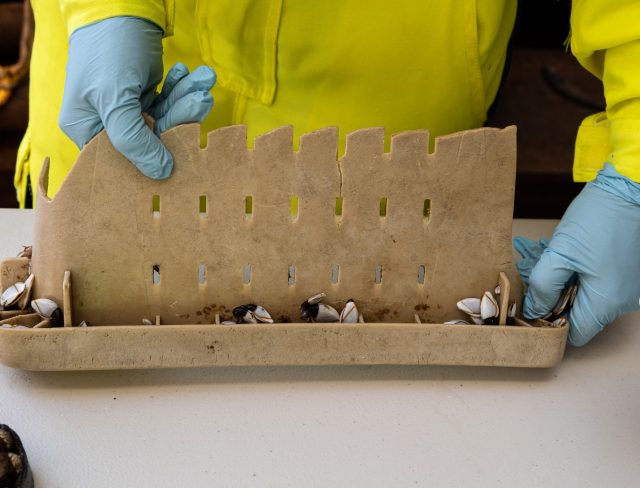We sometimes receive the question: why do some of the plastic pieces shown in our System 002 catch videos look so clean, compared to plastic pollution people are used to seeing closer to shore (i.e., washed up on coastlines).
Many factors influence the growth of organisms on the plastic and the weathering of the floating plastic debris at sea. For example, the waters of the Great Pacific Garbage Patch (GPGP) contain far fewer nutrients when compared to coastal waters. This is because the GPGP is far from land and, therefore, far from key nutrient sources. Furthermore, very little nutrient-rich deep water rises to the surface within this region. Fewer nutrients mean less ideal environment for biofouling – meaning cleaner-looking items.
Additionally, the plastics rub against each other while in the retention zone of the system, meaning barnacle growth on the outside of the objects often falls off.
Regardless, the plastic is not always as clean as it may appear in the catch videos, which generally show the whole catch in one overview rather than zooming in on specific pieces. Biofouling is present on the plastic, especially in cracks and inside. Biofouling is usually more common on parts submerged in the water. The parts that remain at the surface are exposed to more UV radiation and are typically free from biofouling.
Biofouling can be seen under, inside, and in the crevasses of several of the items.
Barnacles in a piece of a basket, extracted by System 002
Additionally, some biofouling is often easier to see when plastic is submerged underwater, as species like sea anemones then spread their tentacles; when they are out of the water, they make themselves smaller and are more difficult to see.
It is also important to note that not all pieces of plastic are the same. It is possible that an object that has been in the water for years has much less biofouling than an object spending only a couple of days in coastal waters due to polymer type and production process. We primarily find fishing gear in our GPGP catch. This gear is made to persist for long periods in the marine environment, often containing additives in the polymers to reduce the amount of life growing on them, ensuring they can stay “clean” and free of biofouling even after decades in the ocean.
We have collected a wide variety of plastic items from the GPGP, with varying levels of marine growth. You can check out some items found in this Facebook album , this YouTube video, and this Tweet from Boyan Slat (CEO and Founder).



